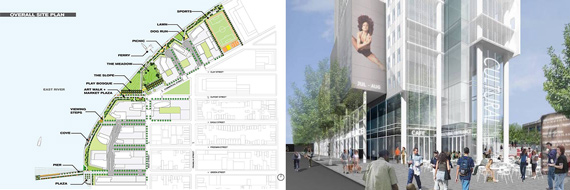Trending
Fort Greene, Greenpoint primed for retail rent growth
Surge of new apartment supply should boost shopping corridors

With nearly 10,000 new apartments heading for Fort Greene and Greenpoint, the neighborhoods’ shopping streets are primed to see a surge in retail rents.
Near the intersection of Lafayette Avenue and Fulton Street in Fort Greene, developers are planning to deliver roughly 3,800 new apartments and 900 hotel rooms. And in Greenpoint, where Franklin Street is the main shopping drag, there are nearly 6,000 new apartments in the pipeline.
Brooklyn-based brokerage CPEX [TRDataCustom], which compiles an annual report on the borough’s retail scene, thinks the addition of all those new potential shoppers will result in a sharp incline in retail rents, Crain’s reported.
“People want to know the next corridor where we are going to see the biggest increase in pricing,” CPEX managing director Ryan Condren said. “There are still a lot of places in Brooklyn that are at a low base point and have room to grow.”
Over the past 10 years, Brooklyn’s priciest retail corridor – Bedford Avenue in Williamsburg – has seen asking rents increase 477 percent, and investor are looking to get in on the ground floor of the borough’s next hot spot.
Bushwick’s Wyckoff Avenue, Nostrand Avenue in Crown Heights and neighborhoods such as Flatbush and Prospect Gardens are also primed to see a jolt to rents.
But the borough does face some headwinds as the retail market as a whole faces challenges such as competition from e-commerce. Only six of the 130 retail corridors that CPEX tracks saw annual increases in asking rents.
Brooklyn may be better prepared than Manhattan, though, to adjust with the shifting market. More than 60 percent of new leases signed in Brooklyn last year were for bars and restaurants, the kinds of shopping that can’t be replicated online, while those kinds of leases only made up 41 percent of the deals inked last year in Manhattan. [Crain’s] – Rich Bockmann




